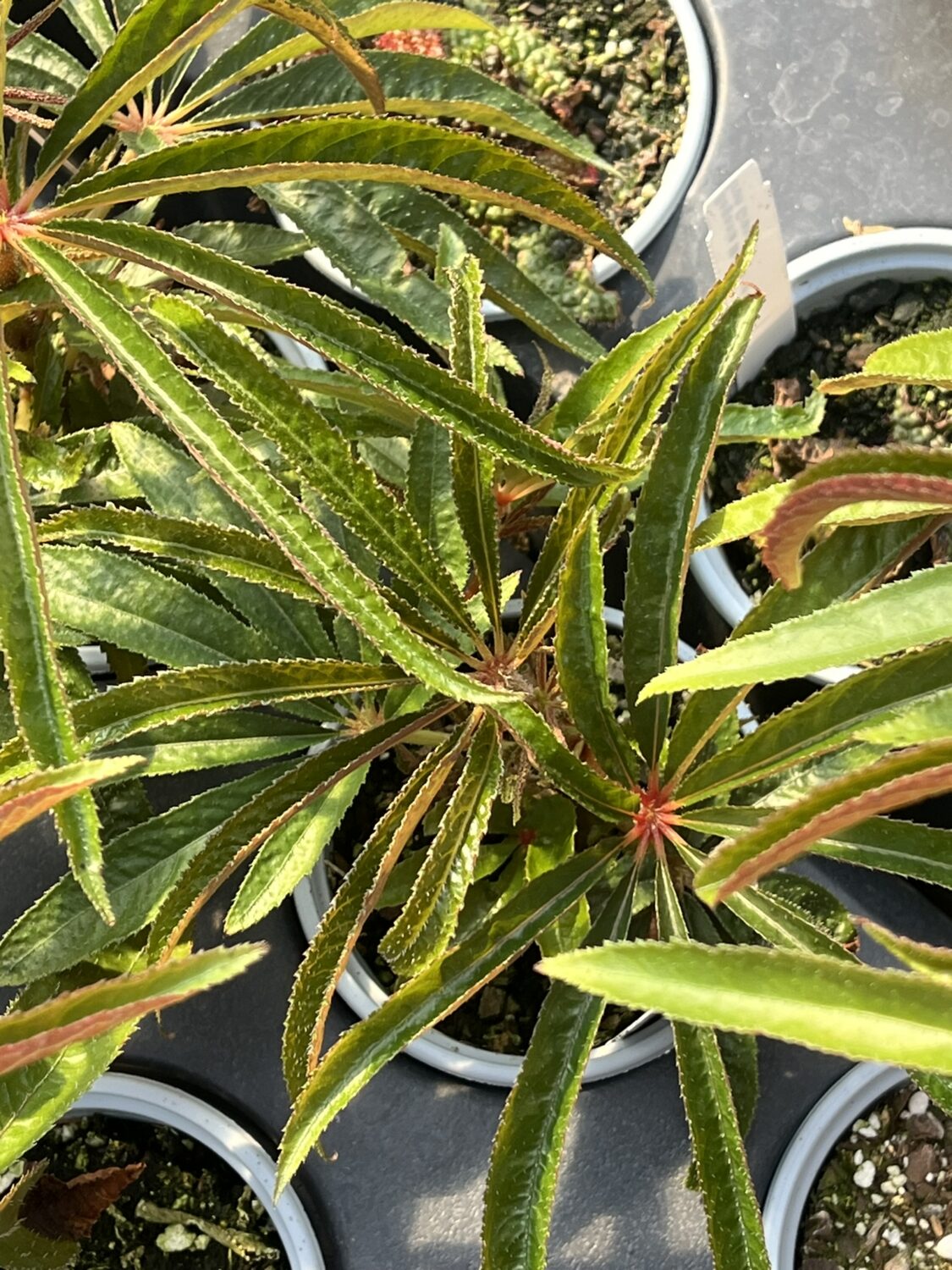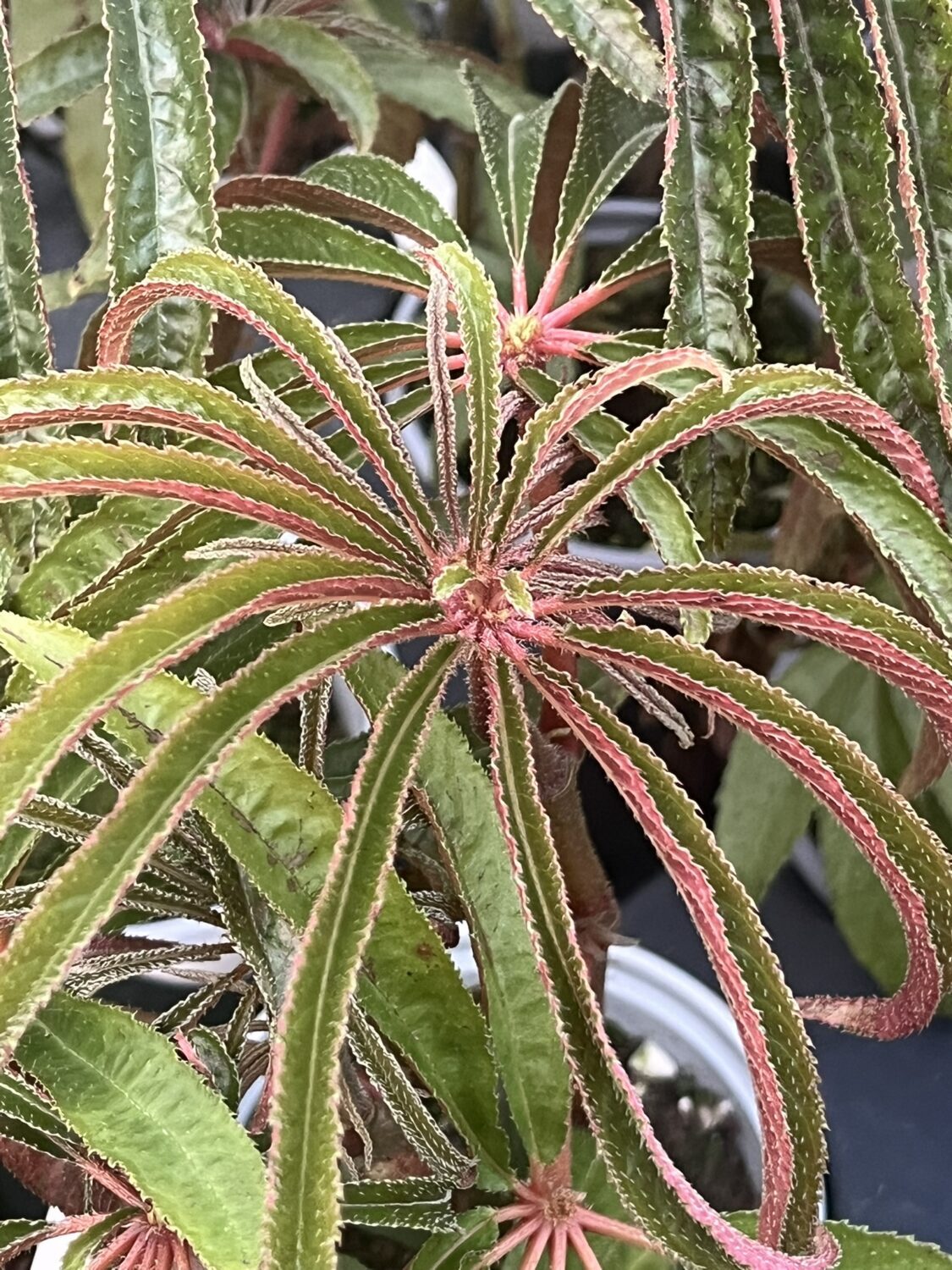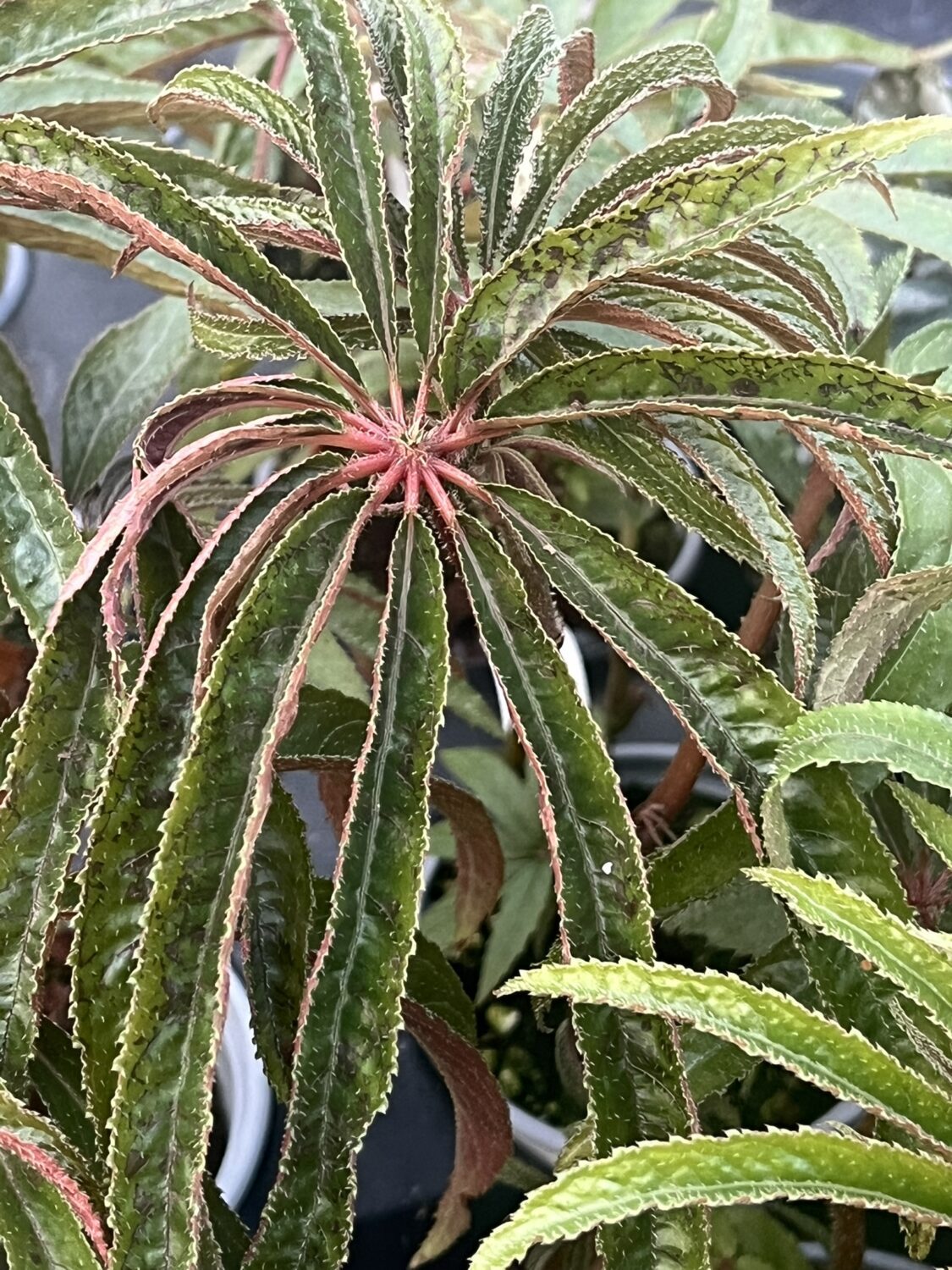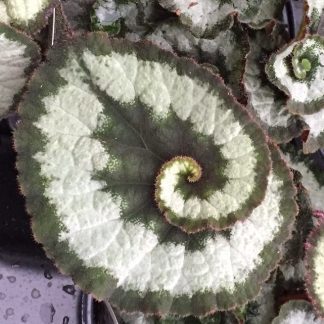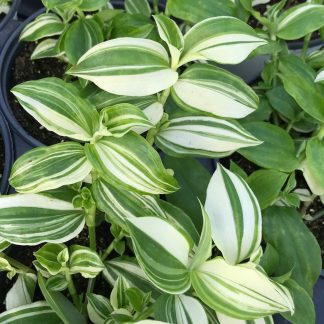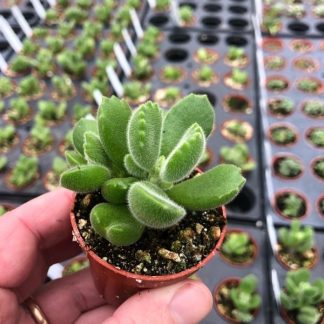Description
Begonia luxurians (Palm Leaf Begonia)
A Tropical Statement for Every Plant Lover
The Begonia luxurians, often called the Palm Leaf Begonia, is a rare treasure among tropical plants. Its long, elegant leaves resemble palm fronds, giving it a striking and unmistakable look. Native to the lush rainforests of Brazil, this begonia is beloved by plant enthusiasts and collectors for its exotic presence and surprisingly manageable care.
Whether displayed in a greenhouse, as a houseplant, or as the star of a shaded garden bed, this begonia is sure to turn heads. Let’s explore why this plant is so special and how to help it thrive in your home or garden.
A Closer Look at Palm Leaf Begonia
The beauty of Begonia luxurians begins with its foliage. Each leaf is deeply divided, with narrow segments that fan out like a tropical palm. The leaves are bright green, lightly textured, and arch gracefully on tall stems. When mature, the plant forms an upright, almost tree-like silhouette that adds height and drama to any space.
During its blooming season, Begonia luxurians surprises with clusters of small, creamy-white flowers. These blossoms dangle gently from tall stalks, adding a soft contrast to the bold leaves. While the flowers are delicate, it’s the foliage that steals the spotlight year-round.
Key Features That Make It Stand Out
-
Exotic Palm-Like Foliage – Large, deeply lobed leaves mimic the fronds of a palm tree.
-
Architectural Growth Habit – Upright stems and lush foliage create a dramatic, tropical profile.
-
Seasonal Blooms – Small white flowers appear in the growing season, adding extra charm.
-
Versatile Display – Perfect for shaded gardens, large containers, or bright indoor rooms.
-
Tropical Heritage – Native to Brazil’s rainforests, it brings an authentic jungle vibe to your space.
-
Surprisingly Easy to Grow – Adaptable to many conditions with basic care.
How to Grow Begonia luxurians
Caring for the Palm Leaf Begonia is easier than its exotic looks suggest. With the right balance of light, water, and warmth, this plant rewards you with steady growth and show-stopping foliage.
1. Light and Location
-
Indoors: Place in bright, indirect light. An east- or north-facing window works well. If sunlight is too strong, diffuse it with sheer curtains.
-
Outdoors: Grow in partial shade or dappled sunlight, much like its native rainforest habitat. Full sun can scorch the leaves.
2. Temperature and Humidity
-
Thrives in warm conditions: 65–85°F (18–29°C).
-
Cannot tolerate frost; bring indoors if temperatures drop below 55°F (13°C).
-
Loves high humidity. Mist the leaves, use a humidifier, or place the pot on a pebble tray to boost moisture in the air.
3. Soil and Planting
-
Use a rich, well-draining potting mix. A blend of peat moss, perlite, and compost works beautifully. Adding orchid bark or coarse sand can improve drainage further.
-
Always plant in a container with drainage holes to prevent water from sitting around the roots.
4. Watering Needs
-
Keep soil evenly moist but never soggy. Water thoroughly when the top inch of soil feels dry.
-
Reduce watering in winter, as the plant slows its growth.
-
Avoid letting water sit in saucers or trays; this can lead to root rot.
5. Feeding for Healthy Growth
-
Feed every 2–4 weeks during spring and summer using a balanced liquid fertilizer at half strength.
-
For an organic option, compost tea or a slow-release organic fertilizer works well.
-
Pause feeding in fall and winter when growth naturally slows.
6. Pruning and Maintenance
-
Prune regularly to remove damaged leaves and encourage bushier growth.
-
Wipe the leaves gently with a damp cloth to remove dust and keep them glossy.
-
Repot every 2–3 years, moving to a slightly larger pot and refreshing the soil.
7. Propagation Made Simple
Palm Leaf Begonia is easy to share with friends or multiply for your own collection.
How to propagate:
-
Take a healthy stem cutting with at least two nodes.
-
Place it in water or directly into moist potting mix.
-
If using soil, cover with a plastic bag to hold humidity (but don’t let the bag touch the cutting).
-
Roots form in about 4–6 weeks; transplant into a regular pot once established.
8. Pest and Disease Tips
-
Common pests: Spider mites, aphids, and mealybugs. Treat with neem oil or insecticidal soap.
-
Fungal issues: Overwatering or poor air flow can cause powdery mildew or root rot. Keep soil draining well and avoid wetting the leaves when watering.
9. Winter Care
-
Bring indoors before the first frost.
-
Place in a warm spot with bright light and high humidity.
-
Water less often but don’t let the soil dry out completely.
Landscaping and Decorative Ideas
The Palm Leaf Begonia can transform any space with its tropical personality. Here are some creative ways to showcase it:
-
Tropical Focal Point – Use it as a statement plant in a shaded garden bed.
-
Container Drama – Grow in a large pot for patios, porches, or bright indoor corners.
-
Greenhouse Star – A must-have for collectors of rare and exotic species.
-
Companion Planting – Combine with ferns, caladiums, or hostas for layered texture.
Troubleshooting Common Issues
-
Yellowing Leaves – Often from overwatering. Let soil dry slightly and check drainage.
-
Leggy Growth – Not enough light. Move to a brighter spot with indirect sun.
-
Drooping Leaves – May be underwatered or too dry. Increase watering and humidity.
Why You’ll Love This Plant
Begonia luxurians is more than just a plant – it’s a living piece of the rainforest. Its palm-like leaves create instant drama in any room or garden, yet its care is refreshingly straightforward. For collectors, it’s a must-have. For beginners, it’s a confidence builder. And for anyone who loves tropical vibes, it’s pure joy.
A Botanical Treasure Worth Growing
If you’re looking for a plant that feels rare yet approachable, Begonia luxurians is the one. It bridges the gap between exotic beauty and everyday care, thriving in both indoor collections and shaded outdoor spaces. With just a little attention to light, moisture, and warmth, this palm-leaf begonia will reward you with lush growth season after season.
Bring one home, and let a piece of Brazil’s rainforest transform your space.

